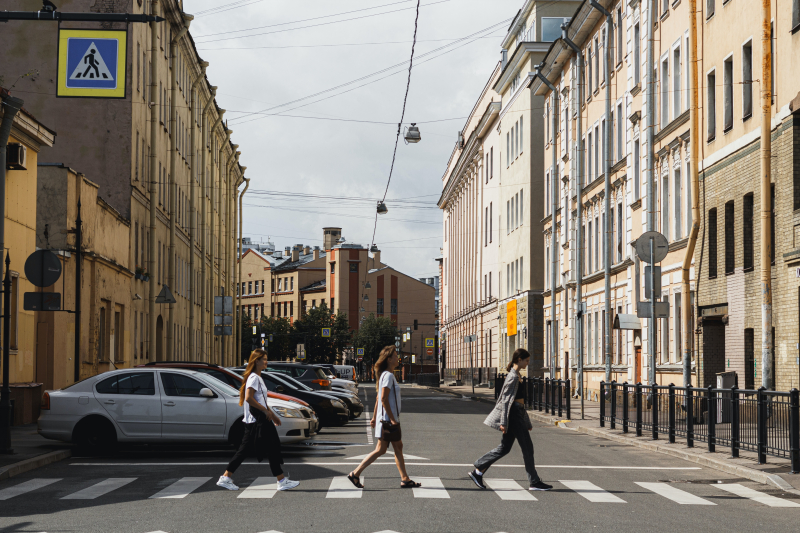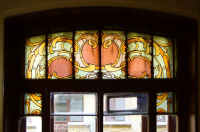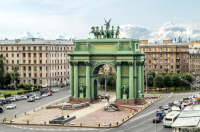Moscow Railway Station (St. Petersburg) ⇔ Leningrad Railway Station (Moscow)
Let’s start with the most striking resemblance – these twins living in different cities: the same central clock tower, the same arched first floor windows, the same columns. There’s no mystery as to why these buildings are so alike: they were designed by one architect, Konstantin Thon, as a single major 19th-century project, the termini of the Moscow-St. Petersburg railway. Modern differences are mostly internal: if from Leningrad Station in Moscow the farthest you can travel is St. Petersburg, Pskov, and Murmansk, a train from Moscow Station can take you far beyond the capital and all the way to Central and South Asia or Siberia.
Church of the Savior on Blood ⇔ Saint Basil's Cathedral
These two landmarks were built more than 300 years apart and both have unique histories; yet, they are still often confused with each other – and not only by foreigners. The Church of the Savior on Blood was built in the late 19th century on the site where Emperor Alexander II was assassinated. Although the project was inspired by 17th-century Russian churches, especially those from Yaroslavl, it's Moscow's legendary cathedral that comes to mind first when you see it. A closer look reveals their differences, from the number of domes to geometry, but both are, beyond debate, similar in their majesty.
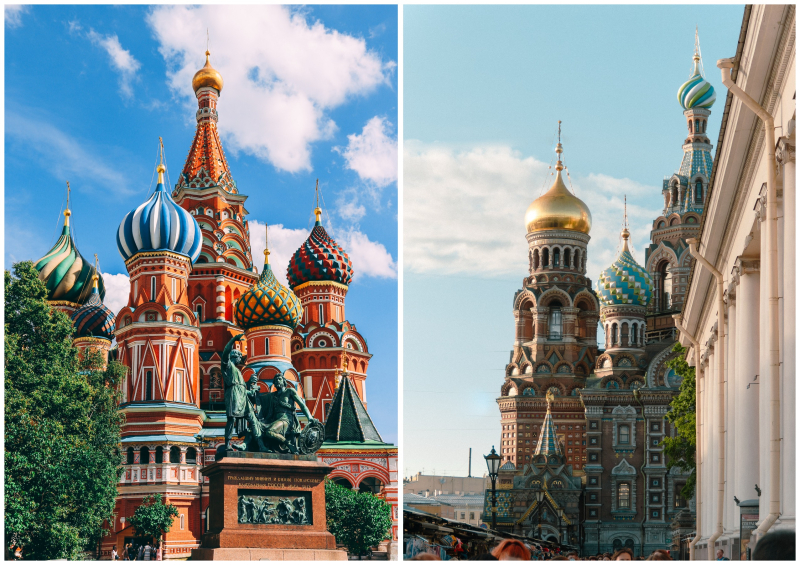
Saint Basil's Cathedral and Church of the Savior on Blood. Credits: Evgeniy Prokofiev (@pr0gi_) via Unsplash / Nikolay Vorobyev (@nikolayv) via Unsplash
Feodorovskaya Icon Cathedral ⇔ Kremlin Wall
Behind Moscow Station, the quaint Mirgorodskaya Street hides its own red brick battlement, a humble version of the grand Kremlin Wall in Moscow. Like most tsarist-era-looking constructions in St. Petersburg, it belongs to Russian Revival architecture, a 19th-century style that echoes old architectural traditions. The wall is adjacent to a snow-white cathedral built to commemorate 300 years of the Romanov family’s reign. Reopened in 2013 after a long restoration and redecoration, it’s definitely worth a visit.
Moskovsky Prospect ⇔ Soviet Moscow
There’s nothing in St. Petersburg more related to the Russian capital than the avenue named after it. Moskovsky Prospect runs from Sennaya Square to Victory Square, but Moscow scenery starts at the southern stretch (right from the Elektrosila metro station) of the prospect, featuring blocks of buildings in the distinctive Stalinist style. This is Soviet urban planning at its best: wide streets, neat tall buildings, and a lot of greenery.
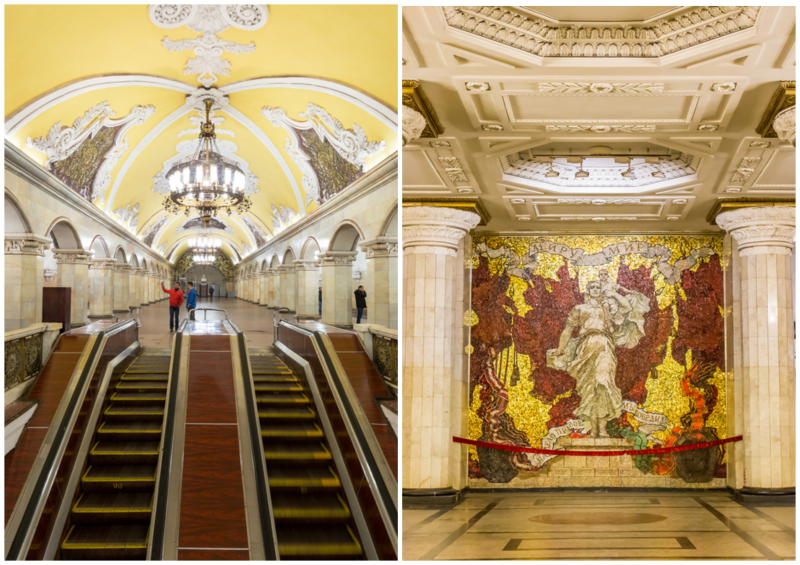
Komsomolskaya metro station (Moscow) and Avtovo metro station (St. Petersburg) Credits: piithhant via Photogenica / scaliger via Photogenica
Red line of St. Petersburg metro ⇔ Moscow metro
If you google the world’s most beautiful metro stations, you’ll notice that almost every article mentions the Moscow metro. This is the Soviet legacy that, to a lesser extent, has reached St. Petersburg, too. To get a sense of what the Moscow metro is like, take a ride from Ploshchad Vosstaniya to Avtovo, passing the first seven stations of the St. Petersburg metro, which opened in 1955, until you arrive at one of the world’s most beautiful underground stations.
